Search
What are you looking for?

Swiss Machining is a highly specialized and precise manufacturing process designed to produce intricate components with tight tolerances. The methodology of Swiss Machining involves a series of systematic steps that leverage advanced technology and specialized equipment. Let's delve into the detailed workings of Swiss Machining:

Workpiece Setup:
The process begins with securing the raw material, often in the form of a long bar or wire, into the machine. The material is fed through a guide bushing, a crucial component that supports and stabilizes the workpiece during machining. The guide bushing is positioned close to the cutting tools, minimizing vibrations and deflections, ensuring high precision.
CNC Programming:
Swiss Machining heavily relies on Computer Numerical Control (CNC) technology. CNC programming involves creating a detailed set of instructions that guide the movements of the cutting tools, the rotation of the workpiece, and other parameters. The CNC program dictates the specific toolpaths, speeds, and depths of cuts required for each machining operation.
Tool Movement and Control:
Swiss-style lathes are equipped with sliding headstocks, allowing for precise control over the movement of cutting tools. The sliding headstock enables the simultaneous machining of the workpiece from multiple angles, contributing to efficiency. Tools move radially and axially, creating intricate features and shapes with a high degree of accuracy.
Material Removal:
High-speed rotating cutting tools remove material from the workpiece in a controlled manner.
The close proximity of the guide bushing to the cutting tools minimizes any unwanted vibrations or deflections. Swiss Machining is known for its ability to achieve tight tolerances and intricate details during material removal.
Simultaneous Machining:
One of the defining features of Swiss Machining is its capability for simultaneous machining. Multiple cutting tools can engage with the workpiece at the same time, allowing for the creation of complex geometries in a single setup. Simultaneous machining contributes to reduced cycle times and increased efficiency.
Quality Control Measures:
Throughout the machining process, quality control measures are implemented to ensure the final components meet stringent specifications. Precision measurement tools are used to verify dimensions and tolerances, guaranteeing the highest level of accuracy.
Versatility in Material Handling:
Swiss Machining is versatile in handling various materials, from metals like aluminum and titanium to plastics. The process adapts to the unique properties of different materials, showcasing its flexibility.
Finishing Operations:
Swiss Machining can incorporate finishing operations, such as polishing or deburring, in the same setup.This reduces the need for additional post-processing steps, contributing to overall efficiency.
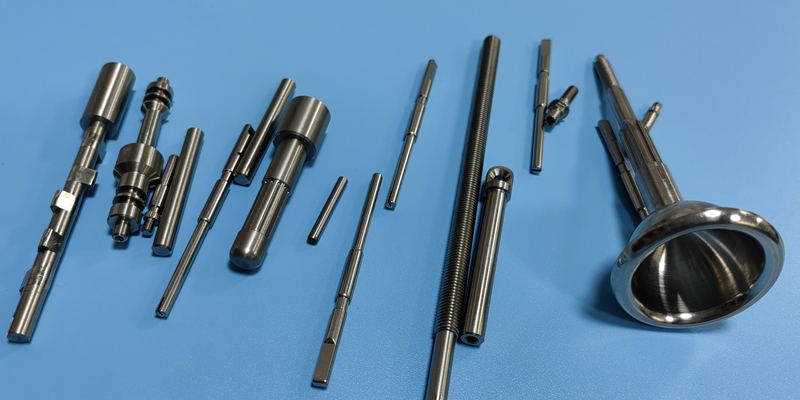
Swiss Machining is a synchronized dance of cutting-edge technology, precision tools, and advanced equipment. Its ability to handle intricate designs, achieve tight tolerances, and produce high-quality components makes it a preferred choice for industries demanding unparalleled precision in their manufactured parts.
Swiss Machining, renowned for its precision and efficiency, relies on a set of fundamental principles and techniques. Understanding these core fundamentals is essential for grasping the intricacies of the Swiss Machining process. Let's explore the key elements that form the foundation of this precision manufacturing method:
1. Guide Bushing and Workpiece Support:
Purpose: The guide bushing is a critical component that provides support and stability to the workpiece during machining.
Function: Positioned close to the cutting tools, the guide bushing minimizes vibrations and deflections, ensuring the workpiece remains stable for precise machining.
Advantages: This support mechanism allows for the machining of long, slender components with high precision, a characteristic that sets Swiss Machining apart.
2. Sliding Headstocks for Tool Control:
Purpose: Swiss-style lathes feature sliding headstocks, allowing for precise control over the movement of cutting tools.
Function: The sliding headstock facilitates the radial and axial movement of tools, enabling the creation of intricate features with a high degree of accuracy.
Advantages: This controlled movement is essential for achieving tight tolerances and simultaneous machining from multiple angles, contributing to efficiency.
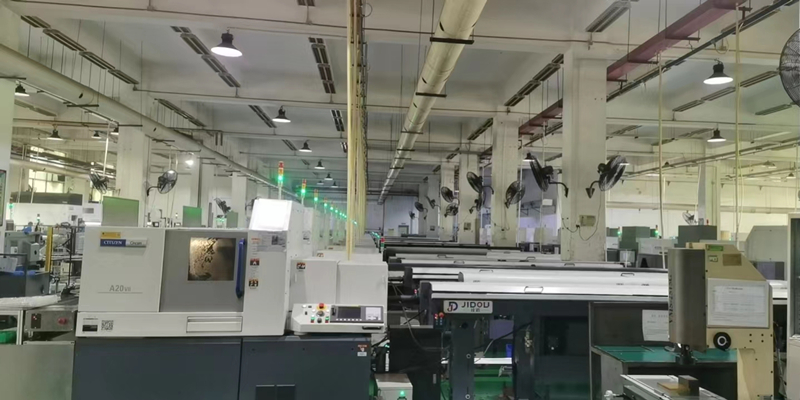
3. Simultaneous Machining:
Purpose: Simultaneous machining is a distinctive feature of Swiss Machining that enhances efficiency.
Function: Multiple cutting tools can engage with the workpiece simultaneously, allowing for the creation of complex geometries in a single setup.
Advantages: Reduced cycle times, increased productivity, and the ability to produce intricate components with fewer machining steps.
4. CNC Programming:
Purpose: Computer Numerical Control (CNC) technology forms the backbone of Swiss Machining.
Function: CNC programming involves creating detailed instructions that guide the movements of the cutting tools, the rotation of the workpiece, and other parameters.
Advantages: Precision control over tool movements, repeatability in machining operations, and adaptability for complex geometries.
5. Precision Measurement Tools:
Purpose: Quality control is paramount in Swiss Machining.
Function: Precision measurement tools, such as micrometers and gauges, are used to verify dimensions and tolerances throughout the machining process.
Advantages: Ensures the final components meet stringent specifications, maintaining the highest level of accuracy.
6. Material Versatility:
Purpose: Swiss Machining is adaptable to a wide range of materials.
Function: The process accommodates materials such as metals (aluminum, titanium) and plastics, showcasing its versatility.
Advantages: Allows manufacturers to work with diverse materials based on the requirements of the end product.
7. Efficiency in High-Volume Production:
Purpose: Swiss Machining is known for its efficiency, especially in high-volume production.
Function: Rapid tool changes, simultaneous machining, and minimal setup times contribute to streamlined production processes.
Advantages: Ideal for industries requiring large quantities of precision components, such as automotive and electronics.
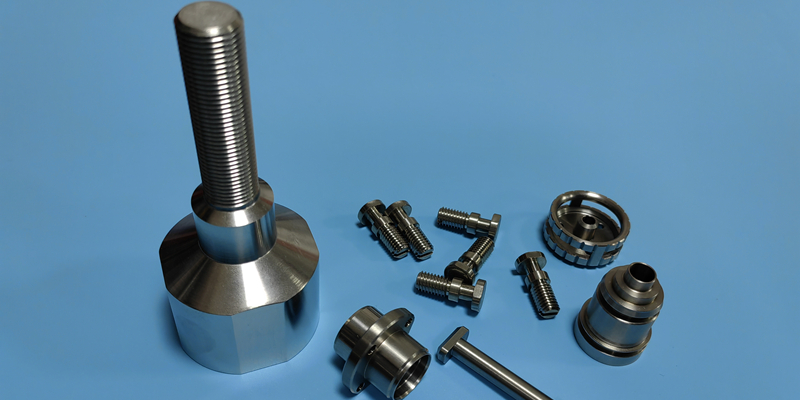
8. Focus on Precision and Stability:
Purpose: The overarching goal of Swiss Machining is to achieve unparalleled precision.
Function: Precision is maintained through the close collaboration of guide bushings, sliding headstocks, and CNC controls, ensuring stability during the entire machining process.
Advantages: Results in components with tight tolerances, ideal for applications where precision is critical.
The fundamentals of Swiss Machining revolve around the synergy of guide bushings, sliding headstocks, simultaneous machining, CNC programming, precision measurement tools, material versatility, and a relentless focus on precision and stability. These elements work in harmony to deliver high-quality, intricate components with unmatched accuracy.
Swiss Machining is a sophisticated manufacturing process that relies on a series of meticulously coordinated steps and mechanisms to produce intricate components with unparalleled precision. Let's delve into the detailed process and the mechanisms that set Swiss Machining apart in the world of precision manufacturing:
1. Workpiece Setup:
The process begins with securing a long bar or wire of raw material into the machine.
The material is fed through a guide bushing, which supports and stabilizes the workpiece during machining.
2. CNC Programming:
Process:
Computer Numerical Control (CNC) technology plays a central role in Swiss Machining.
Detailed instructions, in the form of a CNC program, are created to guide the movements of cutting tools, the rotation of the workpiece, and other parameters.
Mechanism:
CNC programming ensures precision in tool movements and facilitates the creation of complex geometries with a high degree of accuracy.
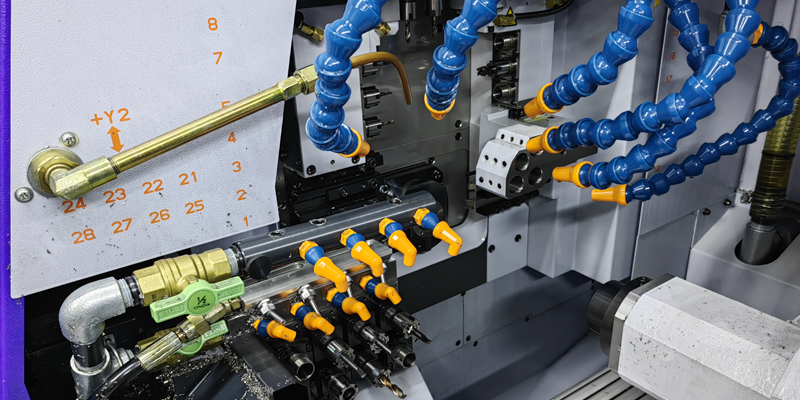
3. Tool Movement and Control:
Process:
Swiss-style lathes are equipped with sliding headstocks that enable precise control over the movement of cutting tools.
Tools move radially and axially, creating intricate features on the workpiece.
Mechanism:
The sliding headstock allows for simultaneous machining from multiple angles, contributing to efficiency and the creation of complex components.
4. Material Removal:
Process:
High-speed rotating cutting tools remove material from the workpiece in a controlled manner.
The proximity of the guide bushing to the cutting tools minimizes vibrations and deflections.
Mechanism:
Material removal is precise and follows CNC-programmed toolpaths, ensuring tight tolerances and intricate details.
5. Simultaneous Machining:
Process:
One of the distinctive features of Swiss Machining is its ability to perform multiple machining operations simultaneously.
Multiple cutting tools engage with the workpiece at the same time.
Mechanism:
Simultaneous machining reduces cycle times, increases productivity, and allows for the creation of complex features in a single setup.
6. Versatility in Material Handling:
Process:
Swiss Machining is versatile and can handle various materials, including metals like aluminum, stainless steel, and titanium, as well as plastics.
Mechanism:
The process adapts to the unique properties of different materials, showcasing its flexibility and applicability across diverse industries.
Understanding the process and mechanisms behind Swiss Machining emphasizes the synergy of advanced technology, precision tooling, and the unique design of Swiss-style lathes. The result is a manufacturing method that consistently delivers high-quality components with intricate details and tight tolerances.
Swiss Machining is a testament to precision engineering, relying on a combination of advanced technology, specialized equipment, and meticulous processes. Let's delve into the technical aspects that define how Swiss Machining works, from CNC programming to tool movements and material handling:
1. CNC Programming:
Technical Detail:
Swiss Machining heavily relies on Computer Numerical Control (CNC) technology.
The CNC program is a set of detailed instructions that dictate the movements of cutting tools, the rotation of the workpiece, and other machining parameters.
Significance:
CNC programming ensures precision in tool movements, allowing for the creation of complex geometries with tight tolerances.
CNC-controlled Swiss-style lathes provide the versatility needed for intricate and precise machining operations.
2. Tool Movement and Control:
Technical Detail:
Swiss-style lathes are equipped with sliding headstocks that allow for precise control over the movement of cutting tools.
Tools move radially and axially, enabling the creation of intricate features on the workpiece.
Significance:
Controlled tool movements, facilitated by sliding headstocks, contribute to achieving tight tolerances and simultaneous machining from multiple angles.
CNC-driven toolpaths ensure consistency and accuracy in every operation.
3. Simultaneous Machining:
Technical Detail:
Simultaneous machining is a key feature that sets Swiss Machining apart.
Multiple cutting tools engage with the workpiece concurrently, reducing cycle times and increasing efficiency.
Significance:
Simultaneous machining allows for the production of complex components in a single setup.
Different tools can work on various features simultaneously, contributing to the overall speed and efficiency of the machining process.
4. Material Handling and Guide Bushing:
Technical Detail:
The workpiece is supported by a guide bushing, a crucial component in Swiss Machining.
The guide bushing minimizes vibrations and deflections, ensuring stability during machining.
Significance:
The close proximity of the guide bushing to the cutting tools enables precise material removal, crucial for achieving tight tolerances.
Material handling is streamlined, allowing for the machining of long, slender components with high precision.
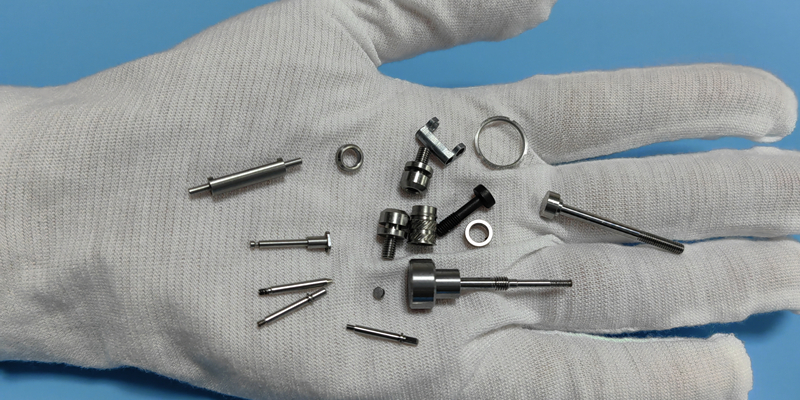
5. Precision Measurement Tools:
Technical Detail:
Swiss Machining incorporates precision measurement tools such as micrometers, gauge blocks, and optical comparators.
These tools are used for in-process and post-process quality checks to ensure components meet specifications.
Significance:
The use of precision measurement tools guarantees that the final components adhere to tight tolerances and quality standards.
Continuous monitoring throughout the process ensures consistency and reliability.
6. CNC-Driven Finishing Operations:
Technical Detail:
Swiss Machining can include finishing operations, such as polishing or deburring, in the same CNC-controlled setup.
Significance:
CNC-driven finishing operations ensure the integration of surface treatments and final touches without additional setups.
Reduces the need for post-processing steps, contributing to overall efficiency.
7. Adaptability to Various Materials:
Technical Detail:
Swiss Machining showcases versatility in handling a wide range of materials, including metals like aluminum, stainless steel, and titanium, as well as plastics.
Significance:
The adaptability to different materials highlights the flexibility of Swiss Machining across diverse industries.
Tooling and cutting parameters can be adjusted to suit the specific properties of each material.
Understanding these technical aspects reveals the intricacies of Swiss Machining, where precision, versatility, and efficiency converge to produce components that meet the highest standards of accuracy and quality. The technical sophistication of Swiss Machining positions it as a cornerstone in modern precision manufacturing